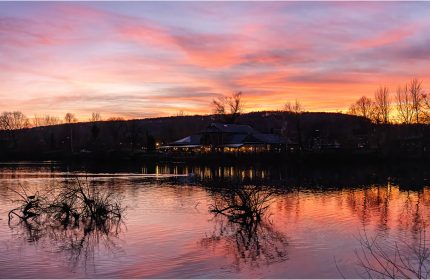What butterflies will you be spotting during Big Butterfly Count?
Certain plants will lure particular butterflies, an expert explains
Wondering which butterflies you might spot in your garden this summer during Big Butterfly Count, the annual UK-wide survey aimed at helping us assess the health of our environment my counting the amount and type of butterflies we see?
It depends on the planting within your outdoor space – but you don’t just have to look at buddleia (also known as the butterfly bush) to spot a wealth of different species.
“July is the peak season for some butterflies. Depending on where you are, you may well see small tortoiseshell and peacock butterflies in your garden, which are among the most common species,” says Anthony McCluskey, conservation manager (Scotland) for Butterfly Conservation.
View this post on Instagram
“You may also see small white and large white butterflies which should be on the wing.”
What plants are likely to attract particular butterflies?
Nasturtiums
“Gardeners can plant certain plants which will attract white butterflies to lay their eggs there, including nasturtium, honesty and sweet rocket,” he says.

Large white butterfly caterpillars can decimate nasturtium leaves
“Nasturtiums flower later in summer, so you’ll see butterflies on them. They will also be visible on other plants which flower earlier because they will be trying to lay their eggs on them.”
Large whites lay many eggs, which are orange or yellow in colour and are easy to see on leaves, while small whites lay their eggs singly, which are still visible on the upper surface of leaves.
“The caterpillars will cause some damage,” he concedes, “which is one of the ways you know caterpillars are present. Large numbers of caterpillars from the large white butterfly can strip the leaves.”
Some people plant nasturtiums near their vegetable patch to deter the caterpillars from cabbages.
Long grass

Speckled wood butterfly
If you leave an area of long grass underneath trees or hedgerows it can attract species like the speckled wood butterfly, which is fairly common and does appear in towns and cities.
He suggests extending No Mow May to attract these brown butterflies which have creamy speckles on the wings. They need long grass to lay their eggs.
Sedum and scabious

Peacock butterfly resting on sedum
The nectar-rich flowers of sedum are very easy to grow, with bright flowers in late summer, while the pincushion flowers of scabious in pink and white flower all summer and are a magnet for butterflies.
Open-flowered dahlias
View this post on Instagram
“Butterflies can get to the nectar in flowers that are quite closed, so go for more open single-flowered dahlias like Bishop of Oxford. You may see peacock butterflies, small tortoiseshell and red admirals,” he says.
Mint
At the end of summer, mint will come into bloom and it’s a really good one for attracting most butterflies, whether in a pot or anywhere in the garden.
Holly

“The holly blue butterfly is a lovely blue-coloured species which people can attract to their garden by planting holly because it lays its eggs on young holly flowers in the spring, but then emerges again in summer and will lay eggs on other plants including ivy or dogwood.”
Drought-tolerant plants
View this post on Instagram
If you are planting in pots, choose drought-tolerant varieties which are not going to dry out. Herbs like thyme, marjoram and lavender are good for pots, especially later in the summer, and will attract butterflies which require a lot of energy, such as the peacock and small tortoiseshell, he suggests.
Perennials

A red admiral butterfly rests on Verbena bonariensis
Other plants which are colourful and which you could plant in pots include short varieties of Verbena bonariensis and sea holly, which has beautiful flowers and leaf shapes. Both are perennials which will come back year after year. Purple Salvia caradonna are also a magnet for butterflies, he says. “Any salvias are attractive to butterflies and bees and can do well in pots.”
Cirsium rivulare
View this post on Instagram
In recent years this this thistle-like plant with deep red or purple flowers on tall branching stems has become popular with designers at the RHS Chelsea Flower Shows. It’s much enjoyed by red admirals and is often awash with bees.
Buckthorn and alder
View this post on Instagram
Large, bright yellow/green brimstone butterflies camouflage themselves in the leaves of alders to lay their eggs.
And what about the humble buddleia?
Some gardeners see the large varieties of buddleia as wayward thugs, and Butterfly Conservation acknowledges that while it is among the best plants to grow for butterflies and moths, it must be managed to prevent it from spreading across sensitive natural habitats.

Buddleia is a rich nectar source for butterflies
Care should be taken to stop it from self-seeding and spreading beyond the garden, where it can invade native plants nearby, it warns.
However, you can get smaller varieties which are suitable for pots and are more controllable.
Which plants are NOT likely to attract butterflies?
View this post on Instagram
Big blousy roses or any highly hybridised plants which are hugely difficult for butterflies to access.
“Some have been bred and selected to have flowers which last for a long time, but which have no pollen or nectar any more. Things like the pelargonium, the tender geranium, isn’t really good for any of our butterflies. Other bedding like petunias don’t seem to attract anything,” says McCluskey.
Big Butterfly Count runs from Friday, July 12 to Sunday, August 4.
The Press Association
Latest posts by The Press Association (see all)
- BBC to air two-part Call The Midwife Christmas special - December 23, 2024
- 6 mind sports to exercise your brain and keep you sharp - December 20, 2024
- Quiz: What classic Christmas food or drink are you? - December 20, 2024
- Leftover turkey and watercress pie - December 20, 2024
- Catherine and William choose family shot for Christmas card photograph - December 19, 2024




















